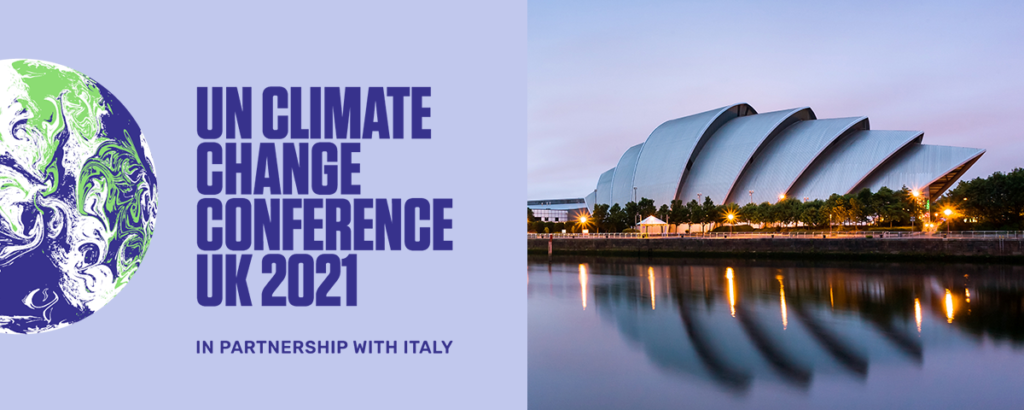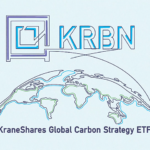COP26 Preview: Moving from Words to Actions
Eron Bloomgarden of Climate Finance Partners (CLIFI) will be on the ground at COP26 bringing live updates Oct 31 - Nov 12.

Over the next two weeks, investors will hear a lot about COP26, The United Nations Climate Change Conference, in the news. The overarching goal is to unleash trillions of dollars in public and private sector climate finance projects in the years to come. The global carbon markets will play an essential role in this financial mobilization. Regardless of your views, it is crucial to understand the potential impact this conference may have in shaping the future of investing. Eron Bloomgarden, co-founder of Climate Finance Partners, will bring us live updates from the ground at COP26 in Glasgow. Leading up to the event, he has composed this preview of what to expect from the meeting.
World leaders, negotiators, business, media, and delegates from 190 countries will gather in Glasgow next week for the annual climate summit known as COP26. ‘COP’ stands for ‘Conference of the Parties’ and ‘Parties’ refers to the governments which have signed the UN Framework Convention on Climate Change (UNFCCC). This is the most important climate event of the year, the biggest summit the UK has ever hosted, and the most significant climate event since the 2015 Paris Agreement.
The stakes could not be higher! Global emissions MUST be slashed in half by 2030 and then reach net zero by 2050 in order to limit warming to 1.5 degrees Celsius. And 1.5 degrees is the magic number because if the world misses this goal, scientists warn of catastrophic outcomes where large parts of the globe will become uninhabitable. It is still possible to achieve this target but it will require unprecedented and immediate action involving redeployment of global finance to support a rapid transition to a decarbonized global economy. There are huge challenges but also tremendous opportunities for investors.
Here are four themes to look for at COP26.
1. United States (re)engagement
The United States will be arriving under very different circumstances than the last COP, under the leadership of President Biden and Special Climate Envoy John Kerry. The US rejoined the Paris Agreement earlier this year after a brief exit, and in April it renewed its commitment to meeting global climate targets, through an ambitious new climate commitment that pledges to reduce U.S. emissions by 50-52% from 2005 levels by 2030. Since then, the administration has announced a series of actions intended to move the country towards achieving that goal. US leadership at COP can be helpful to unlock greater ambition and successful outcomes. Look for announcements from the US and how the delegation leans into a leadership role.
2. Ambition
The Paris Agreement takes a ‘bottom-up’ approach, in which countries decide how they can best address climate change and how much they will reduce their own emissions. They are then required to communicate these commitments to the UN every five years in the form of a pledge called a Nationally Determined Contribution (NDC). This will be the first time since 2015 that countries will be submitting updated NDCs. One of the key criteria for success in Glasgow is that all countries (or as many as possible) submit new NDCs and, when put together, these are ambitious enough to put the world on track for ‘well below’ 2 degrees Celsius. This is part of a ‘ratchet’ process to increase ambition that was agreed upon in 2015.
3. Implementation
Since the Paris agreement negotiators have been working to reach an agreement on the rules governing international cooperation. Now, as these rules are largely complete, the focus will likely shift to implementation, so much so that some analysts are calling Glasgow the ‘implementation COP’. What this could mean in practice is that there will be high-level sessions devoted to identifying the concrete actions, policies, and financial mechanisms that will drive emissions reductions, sharing best practices, engaging on solutions with the private sector and civil society, and building new channels of cooperation to achieve deep reductions. Over the next few weeks, look for announcements about new programs, financing commitments, and other concrete implementation-focused initiatives.
4. Carbon markets and finance
Transitioning to global net-zero will require massive investment and mobilization of finance and investment. Industrialized countries have committed to catalyze at least $100bn in climate finance per year by 2020, and beyond this concrete commitment, the aim is to unleash trillions in additional private and public sector finance. Part of this financial mobilization can be facilitated through carbon markets and the implementation of carbon pricing. On the agenda for COP26 is agreeing on rules to govern international carbon markets – otherwise known as the ‘Article 6 negotiations’. This includes (i) firming up guidance for nations that want to trade surplus emission reductions; (ii) clarifying transparency and avoiding double-counting of emission reductions so that reductions are counted only once and by one country to comply with an obligation; and (iii) guidance on how a new centralized carbon credit program can ensure global reductions.
Outside the formal negotiations, the Taskforce on Scaling Voluntary Carbon Markets (TSVCM) has called for a new structuring of voluntary carbon markets and has just recently launched a new governance body with the intent of creating market fungibility through a core carbon contract. Similarly, the Voluntary Carbon Markets Initiative (VCMI) aims to bring high integrity standards to voluntary carbon by providing guidance for buyers of carbon credits, including on climate claims by businesses. Lastly, protecting and restoring nature, and its unique ability to provide climate, biodiversity, community, and other benefits, is set to be an important theme at COP26.
For more information please visit:
DISCLAIMER: The views expressed represent the opinion of Climate Finance Partners, LLC (“CLIFI”), which are subject to change and are not intended as a forecast of future results or investment advice. Stated information is derived from proprietary and non-proprietary sources which have not been independently verified for accuracy or completeness. While CLIFl believes the information to be accurate and reliable, we do not claim or have responsibility for its completeness, accuracy, or reliability. Statements of future expectations, estimates, projections, and other forward-looking statements are based on available information and management’s view as of the time of these statements. Accordingly, such statements are inherently speculative as they are based on assumptions that may involve known and unknown risks and uncertainties. Actual results, performance, or events may differ materially from those expressed or implied in such statements. The information contained in this report and any attached documents may be confidential or legally privileged. Any unauthorized review, use, disclosure, dissemination, distribution, or copying of this communication or any attached documents, is strictly prohibited. Any information relating to the Kraneshares Global Carbon ETF, including historical performance, month-end performance, and full and summary prospectus, can be found at the Fund’s website. www.kraneshares.com, under the ‘Products’ section. Read the prospectus carefully before investing. The Kraneshares Global Carbon ETF is distributed by SEI Investments Distribution Company (SIDCO), which is not affiliated with the Investment Adviser or Sub-Adviser for the Fund.
r-ks-sei

















